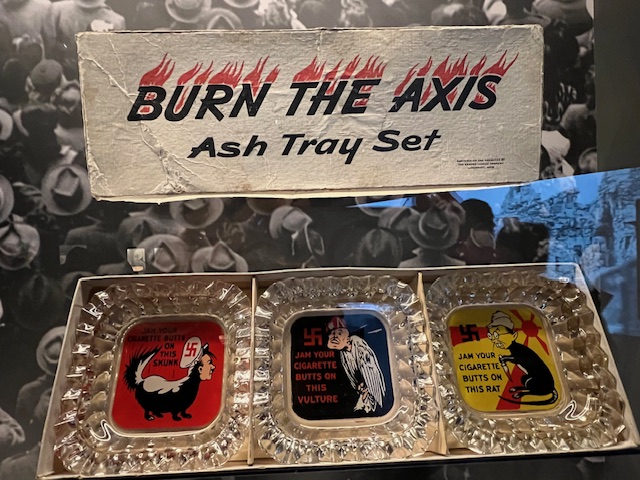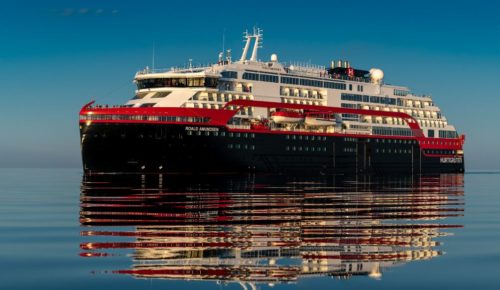
(This is a slightly different version of a story we wrote for NBC News)
Lots of people will be getting their sea legs this summer.
Ports have been packed with cruise ships over the last few years, as vacationers flock to ever larger vessels and operators race to accommodate a surge in post-pandemic bookings — many of them from first-time passengers. The industry expects even more this year.
Benjamin Xiang, a San Francisco-based flight attendant, went on his first cruise last August, setting aside his reservations about “cruise people” and a type of trip he’d imagined would be “not my travel style.”
Taking advantage of a Virgin Voyages promotion that let him use credit card points to cover the $2,500 bill, Xiang booked a weeklong, all-inclusive, adults-only cruise from Barcelona, with stops at Mallorca, Ibiza and along the French Riviera.
“I invited my best friend, we prepaid a $600 bar tab, and we were like, ‘We’ll just hang by the pool, read a book or something,’” said Xiang, 35. “Turned out we partied every single night and had a blast.”
He’s among the many cruise newbies who’ve helped power the industry’s recent growth. Some 27% of cruise passengers over the past two years have been first-timers, up 12% from the prior two-year period, according to the Cruise Lines International Association (CLIA), a trade group.
Will I go back? I think yes,” Xiang said. “Will I pay this time? Yes.”
Return cruisers on the upswing

That’s exactly what cruise operators are hoping for, and so far they’re getting it: 82% of all cruisers say they’ll book again, CLIA’s latest report found.
After welcoming 31.7 million passengers last year, 7% more than in 2019, the industry expects volumes to swell to 34.7 million by the end of 2024. Experts say a combination of newcomers, repeat bookers and younger travelers are powering the uptick.
Like Xiang, many first-time cruisers are groups of friends traveling together, said Jennifer Klaussen, who owns Sundari Travel in Malibu, California.
“Once they get on a cruise and realize it’s not what they thought it would be, they’re usually interested in future cruises and diverse destinations,” she said, adding that newer operators have managed to “reduce the stigma associated with cruising — that it’s only for the elderly.”
Passengers under age 40, including kids, made up around 42% of cruisegoers last year, up from 35% in 2019, according to CLIA. While the average age of a cruise customer is 46 industrywide, millennials now make up nearly the same share — 22% — as baby boomers and Gen Xers, who each comprise 24%.
“The cruise industry has been hard at work to launch new ships and experiences that are attractive to a younger, newer demographic,” said Colleen McDaniel, editor-in-chief of Cruise Critic, “whether that’s a big, new ship with eye-catching attractions for families or more bucket-list-worthy experiences like sailings in the Galapagos or Antarctica.”
Amenities don’t hurt either, said Nathan Rosenberg, chief brand officer at Virgin Voyages, which began sailing only in 2021, as the cruise industry rebounded from the pandemic. “Millennials and Gen Z love the fact that everything is included. Think meals foodies would love, tips covered, Wi-Fi to stay connected and a ton of fitness classes,” he said.
Vessels are getting bigger to handle the growing demand.
In January, Royal Caribbean Group launched Icon of the Seas — currently the world’s largest cruise ship, with 20 decks, 40 restaurants and room for more than 7,000 passengers and 3,000 crew members.
The company, meanwhile, reported a 16% increase in new cruisegoers between this year and last across its various cruise lines. Nearly half of all Royal Caribbean guests are millennials or younger, CEO Jason Liberty said on the company’s first-quarter earnings call.
Similarly, Norwegian Cruise Lines CEO Harry Sommer told CNBC earlier this month, “We appeal obviously to older customers, but millennial and Gen Z is the fastest-growing segment of our cruising right now.”
Cruises generally aren’t cheap, though, and Sommer noted that the company’s target customer is middle- or upper-income. As consumer spending cools down across much of the economy, Americans are adjusting their summer vacation plans to fit their budgets.
The share of travelers put off by steep prices hit 32% in Deloitte’s annual summer travel survey, up sharply from 24% last year. But more affluent vacationers still seem eager to shell out on everything from first-class airfare to luxury train trips, as the industry continues to push premium offerings.
“More higher-income travelers are headed to cruises,” whereas “lower-income travelers are going camping,” the Deloitte report, released Tuesday, said. (“RV trips are up across the board,” it added.)
Good prices and all-inclusive packages cruise packages are welcome
That doesn’t mean cruise passengers aren’t paying attention to price.
Jaclyn Groh will be sailing around the Caribbean on her first cruise in March 2025. The 34-year-old therapist and social work professor at Ohio State University in Columbus typically takes her family on boat trips on a lake, beach visits, “and of course the occasional Disney adventure for the kiddos,” said Groh.
While some of her friends have done family cruises, she’s never been interested in the largest cruise ships because they seem “overwhelming.” But in shopping around for a vacation next year for just her and her husband, Groh said her travel agent’s description of the packages available won her over.
The smaller Explora II vessel she opted for has a “boutique feel that we love,” she said. And it’s priced about the same as the resort in Curaçao where the couple will be celebrating their 10th anniversary this fall. That week on land will run about $6,500, while the cruise comes to about $6,700.
“The price seems very reasonable for all of the inclusions and yet with the cruise we will get to experience so many new locations and excursions,” said Groh, who’s looking forward to “a perfect combination of resting in luxury and adventuring.”















